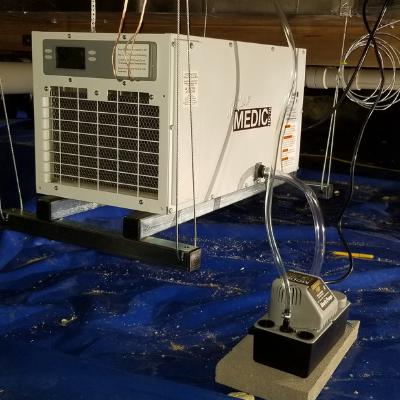
One of the biggest hurdles to get over before remediation of mold can begin is making sure humidity and the moisture in the wood of the areas that are being treated are at acceptable levels. Mold can not be remediated if the wood it is on is “wet” and we will get into what that means later in the article.
Depending on where you are in the house and what sort of ventilation you have, the humidity can range greatly. The EPA, IICRC, and CPCS all suggest relative humidity in a built environment should be maintained between 30-50%. with excessive humidity considered at 60% and around 70% you create an atmosphere for microbial growth.
There are several was to control humidity and the most common way is with a vapor barrier in the crawl space. This prevents moisture from the ground to enter your crawl space. If you have a vapor barrier and there is poor ventilation we sometimes suggest a permanent dehumidifier this allows you to control the humidity in the crawl space.
The humidity in a crawl space is a problem because when it reaches a certain point if wood should get wet from either condensation or a leaky pipe the wood can no longer dry out and this is where mold starts to grow, Around 16% moisture the wood is considered “wet” and in it allows mold to grow. So no matter how you remediate the mold, if the wood is “wet” mold spores deep in the porous wood can continue to live.
That is why before Pure Air Solutions starts a job we always take humidity readings and moisture readings where ever mold is present.






